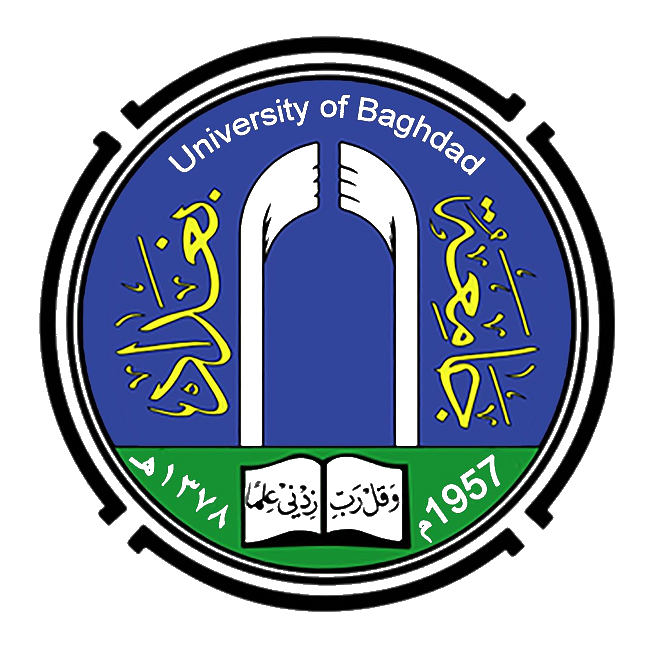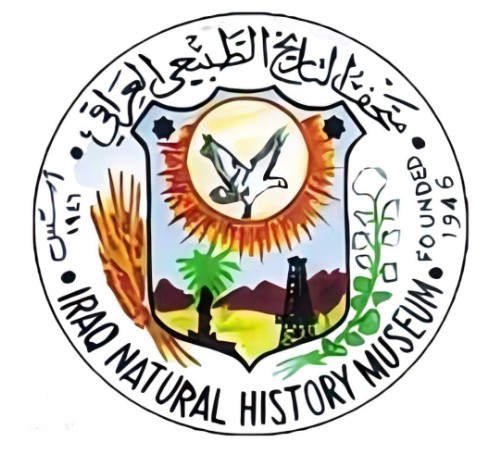MINERALOGY AND GEOCHEMISTRY OF CORAL REEF IN IRAQI MARINE ENVIRONMENT IN THE NORTH PART OF ARABIAN GULF
DOI:
https://doi.org/10.26842/binhm.7.2018.15.2.0189Keywords:
Arabian Gulf, Coral Reefs, Iraq, Menella, Platygyra pini.Abstract
Coral reef area in northwest of the Arabian Gulf was investigated for mineralogy and geochemistry to throw lights on such unique Iraqi Marine Environment; six specimens of two main species of coral reefs, Platygyra pini Chevalier, 1975 and Octocoral Menella were collected at two sites. While eight samples of the surrounding sediments are chosen from other two sites. The mineralogy is determined by XRD, and reveals that calcite, low magnesium-calcite, and aragonite are the main minerals that comprise the Octocoral Menella in site 1, whilst aragonite and calcite are dominate in the P. pini coral reef at site 4.
The non–carbonate fractions indicate that these coral reefs contain quartz, anorthite feldspare , halite, and gypsum; the highest content of aragonite was observed in the P. pini compared to calcite. The abundance of carbonate minerals (92.1%) in the P. pini is in contrast to (73.1%) in the Menella. The main minerals in the sediments of site 2 are represented by chlorite and talc, whereas quartz and phengite are the most prominent minerals that diagnose in sediments of site 3; phengite mineral is a first discovery in the sediments of Arabian Gulf, whilst talc is a first detection in Iraqi marine sediments.
The concentration of CaO is the most abundant oxide in all the analyzed specimens of the coral reef followed by SiO2. There are high proportions of calcium oxide in P. pini Chevalier coral (56.65 %) than the Menella (48.81%). There are some special pattern of distribution for major and trace elements in coral reef area based on calcium content. Most of the silica came from quartz, phengite and clay minerals; the highest concentrations of Al2O3, Fe2O3, K2O, Na2O, MgO, SiO2, TiO2, V2O5, Cr, Ni, Cu, Rb and Zr are found in the sediments of site 2 as opposed to the other sites. These results could affect the association of these elements with clay minerals through adsorption or absorption, the highest content of P2O5, Ga, W and As in the sediments of site 3 may reflect the adsorption of these elements on surface of the quartz and phengite; from the other hand, the highest concentrations of Sr, Zn, Br, Sn, Ta, and Pb in the P. pini may indicate the relative effects of the environmental variation within the studied area.
Downloads
References
Al-Dabbas, M. and Al-Jaberi, M. H. 2015. Elemental distribution in the calcite and aragonite layers of Chione californiensis from the Iraqi Coasts—North Arabian Gulf. Arabian Journal of Geoscience, 8:9433–9440.
Al-Langawi, A. 2013. The Effect of Climate on the Chemical Composition of the Coral Reefs around Kubbar Island—Kuwait. International Journal of Geosciences, 4:511-528.
Basyoni, M. H. 1999. Sedimentology and Geochemistry of the Karan Island Sediments, Arabian Gulf, Saudi Arabia. J. KAU: Mar. Sci. ,10: 89-106.Bathurst, R.G.C., 1975. Carbonate Sediments and Their Diagenesis. Elsevier, Amsterdam, 2nd ed., 658 pp.
Burt, J. 2013. The growth of coral reef science in the Gulf: A historical perspective. Marine Pollution Bulletin Journal,72: 289–301.
Burt, J., Smith, E. G., Warren, C. and Dupont, J. 2015. An assessment of Qatar's coral communities in a regional context. Marine Pollution Bulletin Journal,105: 473–497.
Calvert, S. E. and Pedersen, T. F. 1993. Geochemistry of Recent Oxic and Anoxic Marine Sediments: Implications for the Geological Record. Marine Geology,113: 67-88. https://doi.org/10.1016/0025-3227(93)90150-T
Chen, S., Guo, X., Yoshino, Y., Jin, Z. and Li, P. 2017. Dehydration of phengite inferred by electrical conductivity measurements: Implication for the high conductivity anomalies relevant to the subduction zones. Geological Society of America Journal, 46(1): 11–14.
Cibin, G., Cinque, G., Marcelli, A., Mottana, A. and Sassi, R. 2008. The octahedral sheet of metamorphic 2M1-phengites: a combined EMPA and AXANES study. American Mineralogist Journal, 93: 414-425.
Coles, S. L. and Riegl, B. M. 2013. Thermal tolerances of reef corals in the Gulf: A review of the potential for increasing coral survival and adaptation to climate change through assisted translocation. Marine Pollution Bulletin Journal, 2(72):323–332.
Coles, S. and Fadlallah, H. 1991. Reef coral survival and mortality at low temperature in the Arabian Gulf: New specific lower temperature limits. Coral Reefs Journal, 9: 231-237.
Deer, W. A., Howie, R. A. and Zussman, J. 1992. An Introduction to the Rock-Forming Minerals. 2nd ed., Harlow, England : Longman Scientific & Technical ; New York, NY : Wiley, xvi, 696 pp.
Devnita, R. 2009. Mineralogical characteristics and the pedogenetic processes of soils on coral reefs in Ambon. Geology Journal. Indonesia,4:19-29.
Eghtesadi- Araghi, P. 2011. Coral reefs in the Persian Gulf and Oman Sea: An integrated perspective on some important stressors. Journal f Fisher and Aquatic Science, 6(1):48-56.
Falter, J. L. Atkinson, M. J. and Langdon, C. 2001. Production-respiration relationships at different timescales the Biosphere 2 coral reef biome. Limnol Oceanogr Journal, 46: 1653-1660.
Feely, R. A., Sabine, C., Lee, K., Berelson, W., Kleypas, J., Fabry, V. J. and Millero, F. J. 2004. Impact of anthropogenic CO2 on the CaCO3 system in oceans. Journal of Science, 305: 363-366.
Khan, N., Albadran, A. A. and Albadran, B. 1992. Some Engineering aspects of the alluvial deposits at Basrah region, S. Iraq. Geology Journal, 25 (1) :80-91.
Kleypas, J., McManus, J., Lambert, A. and Menezt, B. 1999. Environmental Limits to Coral Reef Development: Where Do We Drawthe Line?. Journal of American Zoology,39: 146-159.
Lambeck K. 1996. Shoreline reconstructions for the Persian Gulf since the last glacial maximum. Journal of Earth Planet Science, 1-2(142): 43–57.
Langdon, C., Takahashi, T., Sweeney, C., Chipman, D. W., Goddard, J. G., Marubini, F., Aceves, H., Barnett, H. and Atkinson, M. 2000. Effect of calcium carbonate saturation state on the calcification rate of an experimental coral reef. Journal of Global Biogeochemical Cycles, 14(4): 639-354.
Liu, Q., Jin, Z. and Zhang, J. 2009. An experimental study of dehydration melting of phengite-bearing eclogite at 1.5-3.0 GPa. Journal of Science Bulletin (China), 54: 2090-2100.
Machado, F. B. 2016. UNESP Universidade Estadual Paulista. Recovered in: <http://www.rc.unesp.br/museudpm/banco/silicatos/filossilicatos/talco.html>. (Accessed at: 17/07/2016)
Mookherjee, M. and Redfern, S. A. T. 2002. A high-pressure Fourier-transform infrared study of the interlayer and Si-O stretching in phengite-2M 1. Journal of Clay Minerals, 37: 323-336.
Perkol – Fenkel, S. and Banayahu, Y. 2007. Defrential recruitment of benthic communities on neighboring artificial and natural reefs. Journal of Experimental Marine Biology and Ecology Journal, 340: 25-39.
Pilcher, N. J., Wilson, S., Alhazeem. H. and Shokri. M. 2000. Status of Coral Reefs in the Arabian/Persian Gulf and Arabian Sea Region (Middle East). In: Wilkinson, C. (ed.): Status of Coral Reefs of the World: Australian Institute of Marine Science, Australia. 64 PP.
Pohl, T., Al-Muqdadi, S., Ali, M.., Al-Mudaffar, N., Ehrlich, H. and Merkel, B. 2014. Discovery of a living coral reef in the coastal waters of Iraq. Scientific Report, 4:4250.
Pontes, I. F. and Almeida, S. 2005. Talco. Rochas & Minerais Industriais – Usose especificações. CETEM, 628 pp.
Rezai, H. and Savari, A. 2004. Observation of reef fishes in the coastal waters off some Iranian Islands in the Persian Gulf. Journal of Zoology in the Middle East, 43 (2): 488-499.
Riegl, B. 2002. Effects of the 1996 and 1998 positive sea-surface temperature anomalies on corals, coral diseases and fish in the Arabian Gulf (Dubai, UAE). Journal of Marine Biology,140: 29-40.
Schmidt, M.W. and Poli, S. 2014. Devolatilization during subduction. In R.L. Rudnick, Ed., Treatise on Geochemistry: The Crust, 2nd ed., Elsevier, Amsterdam.3, pp 669–701.
Schroeder, J. H. and Purser, B. H. 1986. Reef Diagenesis Introduction. In: Schroeder, J. H. and Purser, B. H. (eds), Reef Diagenesis. Springer – Verlag. New York, pp 1– 7.
Smith, E. G., Hume, B. C., Delaney, P., Wiedenmann, J. and Burt, J. A. 2017. Genetic structure of coral-Symbiodinium symbioses on the world's warmest reefs. PLoS ONE 12:e0180169. doi: 10.1371/journal.pone.0180169
Tucker, M. E. and Hollingworth, T. J. 1986. The Upper Permian Reefs Complex (EZ1) of North East England : Diagenesis in Marine Evaporating Setting. In: Schroeder, J. H. and Purser, B. H. (eds), Reef Diagenesis. Springer – Verlag. New York, pp 270 – 290.











